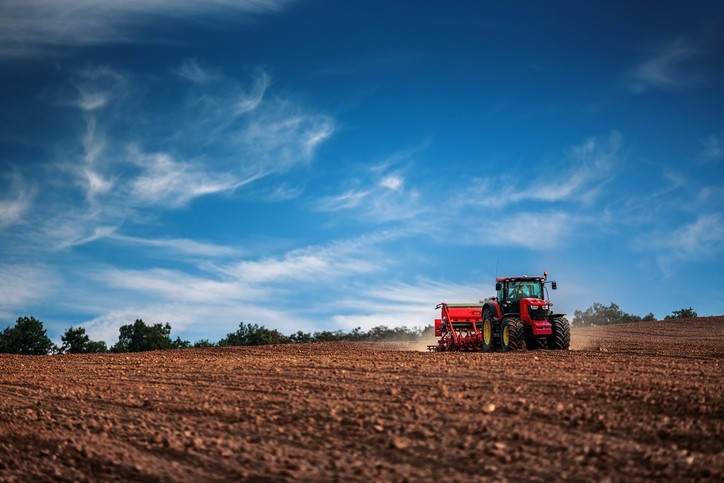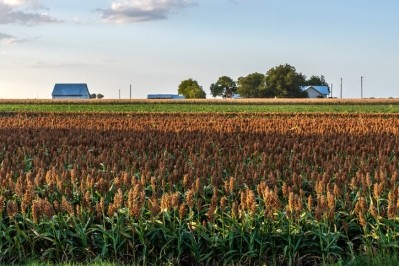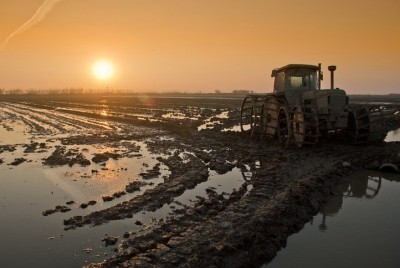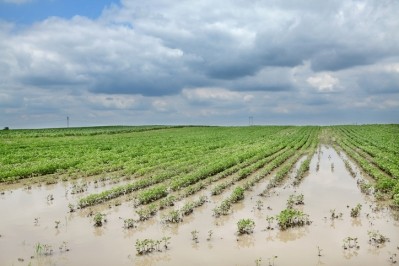Spring storms, wet fields may delay US planting

The US Department of Agriculture (USDA) released details on Monday regarding the planting, growth and condition of several feed crops in a report from the National Agricultural Statistics Service.
Feed crop producers and the commodity markets will be starting to watch how planting progress proceeds, said Chad Hart, associate professor of economics, crop markets specialist and extension economist at Iowa State University.
“We’ll be watching planting progress,” he told us. “Given the weather conditions, we know that planting will proceed slowly this year and given the flooding [we know] that at least a few acres will be taken out of production.”
However, it remains unclear how slowly planting proceed and how many acres either are not planted or are changed to a different crop based on planting schedule, he said. As the spring continues into June there could be acres intended for corn that are shifted to soybean, which have a shorter growing season.
“April 11 is usually the longest day of the year – that’s the first official planting date so everyone plants,” he said. “We know they’ll be slow – the question is how far do we push the planting date back?”
On average, corn planting tends to pick up speed about April 18 and the majority of the crop is planted by about May 10, Hart said. However, the weather remains a wildcard.
Although several states saw flooding earlier this year, the anticipation is that many of those acres will be able to be planted, he said.
“There is a lot of feed available right now; while we have seen prices, throughout the winter, going up on the feed side, but we’ve seen those come back down,” he said regarding the time to buy feed grains or ingredients. “Right now, the slower planting tends to mean less feed supplies as we look to the fall, but while we have planting problems, that does not necessarily translate to production problems.”
“If planting is really problem that will mean pressure on prices as we get deeper into the summer. There is no one strong trend in the market right now.”
Corn planting
Spring planting for corn remains on par with the pace set during planting last year, the USDA reported. However, it has fallen behind the multi-year average.
This year and last year about 3% of the crop was planted by the week ending April 14, the department said. On average about 5% of the crop has been planted in the 18 states responsible for 92% of the feed crop.
States that are outpacing year’s progress include Indiana, Kansas, Kentucky, Missouri and Tennessee, the department said. States that remain behind the pace set this time last year include Nebraska, North Carolina and Texas.
With 57% of its crop planted, Texas has made the most progress, the USDA reported. However, on average, about 12 states have started planting at this time and this year only seven have.
Production of sorghum, oats and barley
For the six states responsible for 97% of sorghum production, the progress is lagging behind both the pace set last year and the multi-year average, the USDA said.
On average about 19% of the crop has been planted by this time, last year about 20% was and this year 16% is in the ground.
Two states report that planting has started – Oklahoma and Texas and both are behind where they were at this point last year.
In the nine states that plant the majority of the US oat crop, the planting so far is moving slightly faster than it did last year, but remains behind the multi-year average, the USDA said. On average about 40% has been planted by this point, and this year about 30% has been.
Texas has concluded its planting of the grain, however, Minnesota, North Dakota and Pennsylvania have yet to start, the department said.
Of the crop planted, about 26% has started to emerge, which is in line with growth last year but remains behind average.
Similarly, barley planting is moving slightly faster than it did last year, but remains well behind the multi-year average.
This year about 8% of the crop has been planted. However, on average, about 19% has been planted by this point.
Typically, planting has started by this time in all five states responsible for 78% of the crop, the USDA added. This year, Minnesota and North Dakota have yet to start planting the feed grain.
Wheat condition and planting
For winter wheat, in the 18 states that account for 90% of the crop about 6% has headed, the USDA said. The progress is behind last year and the multi-year average.
On average about eight states are reporting the crop reaching that stage by this point in the spring, and this year six have, the department said.
However, the condition of the winter wheat crop is earning a higher score than it did last year, the department said. About 60% of this year’s crop has earned a “good” or “excellent” rating, while at this point last year only 31% had those scores.
Spring wheat planting also has fallen behind the rate set in previous years. Usually, all six of the states that are known to plant spring wheat have started by this time, but this year three have.
Last year about 3% of the crop had been planted and on average 13% of the crop is in the ground by this point in April, the USDA said. This year 2% has been planted.












